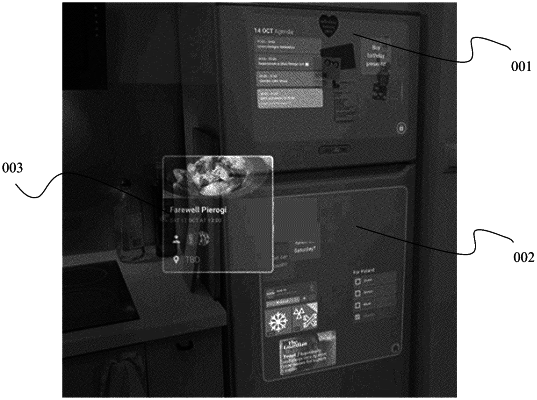| CPC G06T 11/00 (2013.01) [G06T 7/70 (2017.01); G06T 13/80 (2013.01)] | 20 Claims |

|
1. A method comprising: by a first artificial-reality device,
receiving a notification from a server that one or more virtual objects are shared with the first artificial-reality device by a second artificial-reality device, wherein the one or more virtual objects are shared based on being placed by a user of the second artificial-reality device inside a sender-side shared space anchored to a sender-side physical object;
accessing descriptors of a receiver-side physical object and a spatial-relationship definition between the receiver-side physical object and a receiver-side shared space, wherein the receiver-side shared space is configured to be used to both receive other virtual objects and send other virtual objects, wherein the other virtual objects are placed within the receiver-side shared space, and wherein the receiver-side shared space is connected with the sender-side shared space;
detecting the receiver-side physical object based on the descriptors of the receiver-side physical object;
determining a pose of the receiver-side shared space based on the detected receiver-side physical object and the spatial-relationship definition;
detecting physical constraints corresponding to one or more other physical objects within the receiver-side shared space;
receiving display instructions for the one or more virtual objects; and
rendering, based on the display instructions and the physical constraints, the one or more virtual objects within the receiver-side shared space so that the one or more virtual objects avoid spatially overlapping with the one or more other physical objects in the receiver-side shared space.
|